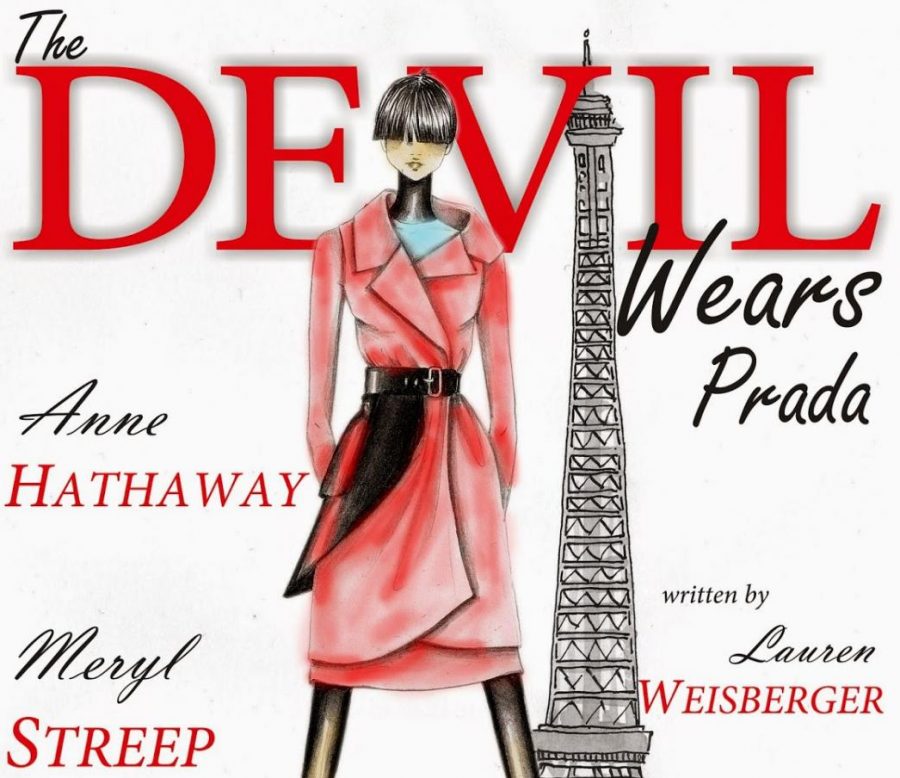The Devil Wears Prada
May 23, 2020
“Oh don’t be ridiculous Andrea. Everybody wants this. Everybody wants to be us.” The Devil Wears Prada is arguably one of the most iconic chick flick movies of all time, available on platforms such as Youtube, Amazon Prime, Netflix, and Hulu. It features Meryl Streep as Miranda Priestly, an infamous editor-in-chief of Runway magazine, and Anne Hathaway as Andrea (Andy) Sachs, a recent college graduate.
The story follows Andy as she lands a job as Miranda’s assistant, becoming more and more immersed in the world of fame, fashion, and fortune throughout the movie. Miranda Priestly isn’t only distinguished for her position and past achievements in her industry, but also her stringent personality and expectations. Unlike many others, Andy dives head-first into her job without much knowledge of what she’s getting into, forcing her to change almost every aspect of her life. The audience watches as she persists in the midst of competition and uncertainty, yet is forced to exchange her friendships, personal life, and sense of identity for success. However, after watching Miranda heartlessly snatch away an opportunity from Nigel, one of her closest employees who has been with her since the beginning, to save her own position, Andy realizes that this isn’t the life she wants. Miranda tells her, “I see a great deal of myself in you.” Andy is taken aback and finally discovers that she doesn’t want a similar path in life as Miranda, burning bridges for personal gains.
Looking beyond the plotline, there is so much that the movie teaches. As the audience sees the story from Andy’s perspective, one of the most prominent themes is the struggle of being an adult. As a new college graduate, Andy is thrown into a position of uncertainty and sheer bewilderment. Her aspirations lie with journalism, yet she works as an assistant in a fashion magazine, where sayings such as “Well, I don’t eat anything and when I feel like I’m about to faint I eat a cube of cheese” are the norm. Furthermore, the movie reveals glimpses of the good and bad with her personal life, including her loving boyfriend who doesn’t fully support her decisions and changes in the course of adjusting to her new lifestyle. Regardless, the process of figuring out her direction in life and the tumultuous time alongside Miranda Priestly leads Andy to lead a more fulfilled life by the end of the movie.
Another aspect of the dominating relationship between Andy and Miranda is the idea of the dynamics of power. Miranda is clearly seen as the epitome of what many people strive for in life: money, fame, and power, and tells Andy, “Details of your incompetence do not interest me.” Nonetheless, all of these come at a price. Similar to Andy, Miranda prioritizes her work over every other part of her life. As a mother of two little girls, she is constantly leaving to go on business trips and attend events, causing tension to arise between her and her husband. It is later revealed that she is becoming divorced, yet Miranda seems to recompose herself shortly after and resume to normal. Therefore, it’s evident that one needs to give up some part of their life to gain power in another, a tragic, but true statement that both Andy and Miranda can attest to.
Finally, The Devil Wears Prada preaches the importance of self-identity. It is one of the most difficult, yet crucial things in life, as one’s future and the person they want to become is truly up to the individual. For some, such as Miranda Priestly, she is living the life she wants, willing to make those sacrifices for power, reputation, and glory. On the other hand, Andy realizes that her values are different and that she doesn’t want to become who Miranda is. Her personal priorities lie in her friendships and relationships, not the greed or fabricated life her time at Runway magazine entailed.
The movie concludes with a final scene showing Andy and Miranda on two opposite sides of a busy city street. Upon eye contact, Andy waves and smiles, but Miranda doesn’t react and gets into her awaiting car instead. Andy laughs to herself and walks off, content with the life she has. The camera pans back to Miranda inside the car, who continues to watch Andy walk away and chuckles to herself, smiling with the knowledge that she has influenced Andy into a more professional and capable person. At the end of the day, there isn’t one character who is better or worse. The Devil Wear Prada is simply an elaborate portrayal of two opposites to teach the audience a lesson of holding true to one’s self-identity and crafting a fulfilling life around that.
Graphic courtesy of PINTEREST.COM

